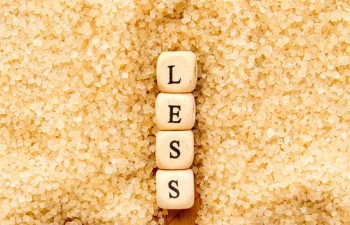
Hydrosol creates sugarless sweeteners
August 16, 2018
By Bakers Journal
 Image courtesy of Hydrosol
Image courtesy of HydrosolWith world-wide efforts to curb childhood obesity and diabetes, sugar reduction creates challenges in baking and confectionary: Hydrosol offers a system that sweetens without compromising texture, flavour or mouth-feel.
Sugar serves functions such as binding liquids, acting as a preservative and is readily soluble. Many natural sweeteners such as stevia have an aftertaste, or do not dissolve properly in baking applications.
“With our new stabilising and texturing systems we can compensate for lower sugar content,” reports Katharina Schäfer, Product Manager Dairy & Deli Foods at Hydrosol in a press release. “The targeted combination of different individual components gives each product the desired qualities. Hydrocolloids and starch give stability, body and a pleasing texture, while special plant fibres improve mouth feel.” A positive side effect is that if the fibre content is high enough, it can be marked on the product as an added health feature.
In order to get the requisite sweetness, depending client’s use, Hydrosol uses low-cost conventional sweeteners or raw materials like stevia, which has a positive image with consumers. Natural flavourings round out the flavour profile. “Our sister company OlbrichtArom even offers a ‘sugar booster’ especially for sugar-reduced products. This natural flavouring amplifies the delicate sweetness in the final product without affecting its characteristic flavour,” adds Schäfer.
Hydrosol’s new functional systems enable different sugar contents as desired, from sugar-reduced to sugar-free. “A reduction by 30 to 50 per cent is relatively easy for us to achieve in most products. We follow European food law,” says Schäfer.
This states that foods and beverages can be labelled as “reduced sugar” if they have at least 30 percent less sugar than comparable products, as long as calorie content is not higher than comparable products. For labelling as “low sugar” the consistency is the determining factor. Solid foods like yogurt can contain no more than 5 g sugar per 100 g food. For milk beverages, soft drinks and other liquids the upper limit is 2.5 g per 100 ml. “Sugar-free” products may not exceed 0.5 g sugar per 100 g or 100 ml.
Print this page
Leave a Reply